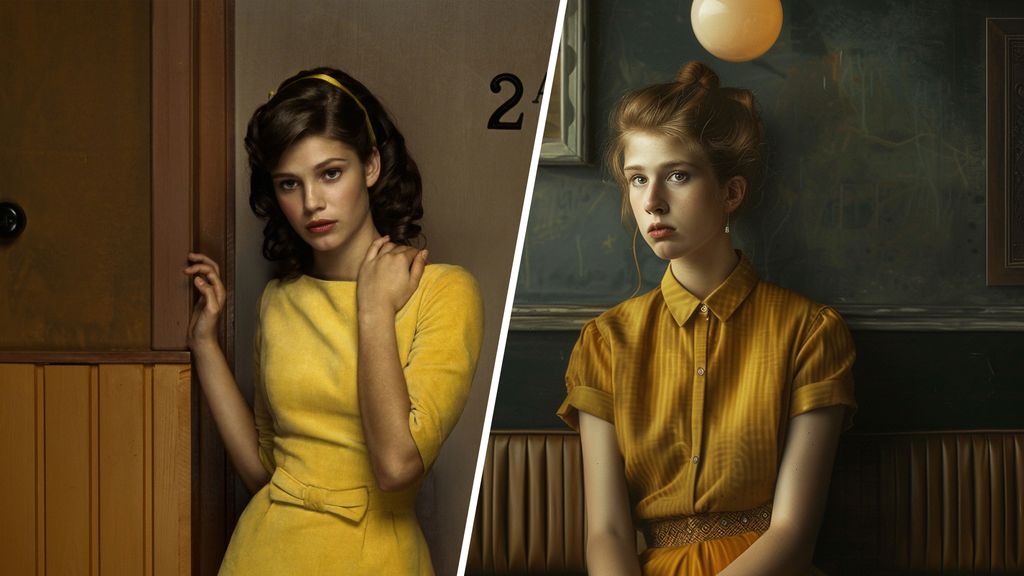
This article was last updated on August 5, 2024
Canada: ![]() Oye! Times readers Get FREE $30 to spend on Amazon, Walmart…
Oye! Times readers Get FREE $30 to spend on Amazon, Walmart…
USA: ![]() Oye! Times readers Get FREE $30 to spend on Amazon, Walmart…
Oye! Times readers Get FREE $30 to spend on Amazon, Walmart…
Table of Contents
Tech companies appear to be illegally training AI with images of Dutch makers
It strongly appears that OpenAI and Midjourney’s AI models to generate images without permission were trained with images from Dutch creators. This is evident from research by the NOS and is confirmed by four experts. In doing so, the tech companies may have infringed copyright.
OpenAI did not want to respond substantively to the research, but referred, among other things, to the possibility for image makers to object. Midjourney did not respond to our questions.
Yellow dress
For the research, we asked the AI models to generate images in the style of various well-known Dutch image makers, including Erwin Olaf, Eddy van Wessel and Dick Bruna. We only asked to imitate the style, without further instructions.
Characteristic features of well-known works emerged each time. For example, the AI models generated images of women in a yellow dress, just like in a photo series by Erwin Olaf.
In the case of Eddy van Wessel, black and white images were created of war zones, scenes for which the photographer is known. Images of Miffy were also generated when we requested an image in the style of Dick Bruna. The rights holders of Bruna do not give permission to use those images in this article.
Notably, creating images in the style of certain artists with DALL-E from OpenAI (the company behind ChatGPT) is sometimes rejected as it violates their terms. However, by trying again in another tab it often works.
The NOS presented the results to four experts in the field of AI: Evangelos Kanoulas and Efstratios Gavves from the University of Amsterdam, Olya Kudina from TU Delft and Noelle Cicilia from Brush AI. They all say that although it cannot be said with 100 percent certainty, it appears very strongly that the AI models have been trained on the Dutch works.
“This is a very generic description,” says Kanoulas of the UvA. “Yet the AI models are able to make an association with, for example, a yellow dress based on someone’s name alone.”
Cicilia emphasizes that an AI model is not itself creative. “Generative AI models merely attempt to mimic or reproduce as closely as possible the data on which they are trained.”
“If works are protected, copyright infringement is generally assumed quite quickly if someone makes off with it,” says Mirjam Elferink, intellectual property lawyer at Elferink & Kortier.
But there is an exception for the collection of public data, Elferink explains. This exception applies, for example, to scientific institutions. But commercial parties can also make use of this as long as rights holders have not explicitly objected: the so-called opt-out.
Such an opt-out was used for the works of Dick Bruna and Eddy van Wessel, which may constitute a copyright violation. This is not the case with Erwin Olaf, says Shirley den Hartog, who now manages his work: “We discussed before his death that it would be very nice if people all over the world continued to be involved with his work.”
Not up to date
“It is good to know that the exception to copyright was introduced into the law before these AI tools became publicly accessible,” says lawyer Elferink. According to her, this now leads to uncertainty about its application to training AI models.
“The pity is that there have not yet been any legal cases in the Netherlands on this subject, so the judge has not yet been able to rule on this issue.” There are several lawsuits against this in the United States OpenAI as Midjourney. There are no statements yet.
Hanneke Holthuis, lawyer at image rights organization Pictoright, says that many image makers are not familiar with this “twist of copyright”. According to her, no one took into account that AI models would suddenly be trained with publicly available works: “You cannot expect someone to make a reservation for something that does not yet exist at that time.”
Opt out
The European AI law, which has been in force since this month, appears to be in line with the opt-out system. Image makers must indicate that they want to use their opt-out right, tech companies must then be transparent about how models are trained and can demonstrate that they do not infringe copyright.
The problem with opt-out is that it actually needs to be applied before AI is trained to do the work, says Holthuis. “Once trained, it is difficult for an AI system to ‘unlearn’ specific data. This means that works that were not published under an opt-out before the AI was trained may have been used irreversibly.” Dutch image makers are welcome optoutnow.ai indicate that they wish to exercise their opt-out right.

Be the first to comment